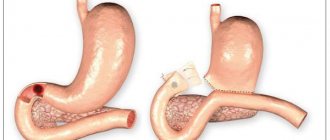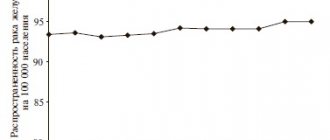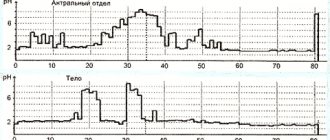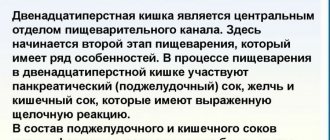What is Solcoseryl ointment used for?
The drug is based on deproteinized dialysate obtained through special processing from the blood of calves. This substance is often used in medicine in countries such as China, Korea, and the entire CIS. It has proven itself to be an effective remedy that can:
- enrich tissue cells damaged due to hypoxia with oxygen and glucose;
- start tissue repair processes;
- activate healthy cell division processes;
- increases the level of energy produced by cells;
- protects the skin from external damage by forming a film on its surface;
- triggers the production of collagen by tissues.
Based on the activity of the drug, the drug can be used for:
- frostbite;
- psoriasis;
- anal ring cracks;
- cuts;
- abrasions;
- scratches;
- bedsores;
- acne marks;
- dermatitis;
First of all, to achieve the best effect, it is necessary to start therapy in the early stages of the problem.
Solcoseryl ointment as a face mask
Cosmetologists claim that the use of Solcoseryl in the early stages of age-related changes allows you to maintain youthful skin. Timely start of use can replace expensive laser rejuvenation in the salon. First of all, Solcoseryl allows you to get rid of wrinkles and prevent their earlier appearance. The ointment is capable of:
- provide adequate nutrition to the facial skin;
- get rid of acne;
- relieve inflammation;
- improve complexion;
- tighten the oval;
- get rid of wrinkles.
The expected effects are possible due to the fact that using a mask allows you to saturate tissues and cells with oxygen and accelerate regeneration. Thanks to the application of the cream, collagen, which is responsible for skin elasticity, begins to be actively produced. The more collagen produced, the fewer wrinkles your skin will have. It is like a support for a heavy skin sheet, preventing its individual areas from falling through, preventing the formation of wrinkles.
Solcoseryl injections: what for
Any surgical intervention is accompanied by a violation of the integrity of the skin and tissues. If the operation involves the removal of some fragment of an internal organ, the body will require a long rehabilitation period, during which the body will be fully or partially restored. Solcoseryl in ampoules can be instantly delivered to tissues, shortening the recovery period. Injections allow you to mobilize all the internal forces of the body to heal wounds, cuts and sutures not only on the outside, but on the internal organs that remain after operations.
Special cases include the prescription of intravenous or intramuscular administration to patients after ophthalmological operations. Solcoseryl ensures active blood circulation, which accelerates the process of adaptation of the organ of vision in the postoperative period, and also reduces the risk of complications.
Drugs used to treat gastric and duodenal ulcers
Home Medical Encyclopedia Medicines Medicines used for diseases of the gastrointestinal tract
See also amigluracil, benzohexonium, halidor, histidine hydrochloride, dibazole, dimecoline, camphonium, quaterone, levamisole, metacin, metoclopramide, metronidazole, sodium bicarbonate, sodium oxyferriscorbone, platiphylline hydrotartrate, romazulan, temechine, etpenal, etc.
H2-HISTAMINE RECEPTOR BLOCKERS
NIZATIDINE
Synonyms: Axid.
Pharmachologic effect. Belongs to the second generation of histamine III receptor blockers. Suppresses the production of hydrochloric acid, both basal (intrinsic) and stimulated by histamine, gastrin and acetylcholine. Simultaneously with a decrease in the production of hydrochloric acid and an increase in pH (decreased acidity), the activity of pepsin (an enzyme that breaks down proteins) decreases.
Indications for use. Duodenal ulcer in the acute phase, benign gastric ulcer in the acute phase, prevention of exacerbations of gastric and duodenal ulcers, refluxesophagitis (inflammation of the esophagus caused by the reflux of gastric contents into the esophagus), complicated course of gastric and duodenal ulcers, acute gastrointestinal bleeding, acute pancreatitis (inflammation of the pancreas), exacerbation of chronic pancreatitis.
Method of administration and dose. For benign ulcers of the stomach and duodenum in the acute phase, 0.15 g is prescribed 2 times a day in the morning and evening or 0.3 g 1 time a day.
To prevent exacerbations of gastric and duodenal ulcers, 0.15 g is prescribed 1 time per day in the morning.
For intravenous drip infusion, dilute 300 mg (12 ml) of the drug in 150 ml of intravenous solution and infuse the solution at the rate necessary to achieve a dose of 10 mg/hour.
For intravenous injection, dilute 100 mg (4 ml) of the drug in 50 ml of solution for intravenous administration and infuse for 15 minutes 3 times a day.
The daily dose of nizatidine should not exceed 480 mg. To maintain a pH (an indicator of the acid-base state) in the stomach above 4, intravenous drip infusion at a rate of 10 mg/h is recommended.
To prepare nizatidine solution for intravenous administration, you can use 0.9% sodium chloride injection, 5% glucose injection, lactated Ringer's solution, or 5% sodium bicarbonate solution.
For patients with impaired renal function, the dosage is adjusted taking into account the values of creatinine clearance (the rate of blood purification from the final product of nitrogen metabolism - creatinine).
Side effect. Possible nausea, rarely - damage to liver tissue; drowsiness, sweating, urticaria, eosinophilia (increased number of eosinophils in the blood), possible development of anaphylaxis (an immediate allergic reaction), bronchospasm (sharp narrowing of the lumen of the bronchi), laryngeal edema; anemia (decreased hemoglobin content in the blood), rarely - thrombocytopenia (decreased number of platelets in the blood), tachycardia (rapid heartbeat), gynecomastia (enlarged mammary glands in men), hyperuricemia (increased uric acid in the urine).
Contraindications. Hypersensitivity to the drug.
Release form. Capsules of 0.15 and 0.3 g in packs of 30 pieces; concentrate for infusion in bottles of 4, 6 and 12 ml (1 ml contains 0.025 g of nizatidine).
Storage conditions. List B. In a dry place, protected from light.
RANITIDINE
Synonyms: Alciblock, Apo-Ranitidine, Neoseptin-R, Zoran, Mentak, Ptinolin, Raniberl, Ranital, Rantak, Rintide, Gistak, Pentoran, Ranigast, Ranisan, Ulkuran, Acidex, Acylok E, Anistal, Danitin, Istomar, Ranacid, Raniplex , Ranidil, Raniplex, Renks, Ulsal, Vizerul, Ulkoren, Taural, Zantac, Ranitard, Ranitin, Ulkodin, Yazitin, Ranibal, Duoran, Novo-Ranidin, Ranitab, Gertokalm, etc.
Pharmachologic effect. Ranitidine belongs to the second generation of blockers. It suppresses basal (intrinsic) and stimulated by histamine, gastrin and acetylcholine production of hydrochloric acid. Simultaneously with a decrease in the production of hydrochloric acid and an increase in pH (decreased acidity), the activity of pepsin (an enzyme that breaks down proteins) decreases. The duration of action of the drug after a single dose is 12 hours.
Indications for use. Peptic ulcer of the stomach and duodenum in the acute stage; prevention of exacerbations of peptic ulcer disease; symptomatic ulcers (rapidly developing ulcers of the stomach and duodenum due to stress on the body, taking medications or diseases of other internal organs); erosive esophagitis (inflammation of the esophagus with disruption of the integrity of its mucous membrane) and reflux esophagitis (inflammation of the esophagus caused by the reflux of gastric contents into the esophagus); Zollinger-Ellison syndrome
(combination of stomach ulcer and benign tumor of the pancreas); prevention of lesions of the upper gastrointestinal tract and in the postoperative period; prevention of aspiration of gastric juice (entry of gastric juice into the respiratory tract) in patients undergoing surgery under anesthesia.
Method of administration and dose. Doses are set individually. Typically, adults are prescribed 0.15 g 2 times a day (morning and evening) or 0.3 g at bedtime. Duration of treatment is 4-8 weeks. To prevent exacerbations of peptic ulcer disease, 0.15 g is prescribed at bedtime for up to 12 months with constant endoscopic monitoring (examination of the gastric mucosa with a special tubular optical device designed for visual / vision / examination) every 4 months. For Zollinger-Ellison syndrome, 0.15 g is prescribed 3 times a day; if necessary, the dose can be increased to 0.6-0.9 g per day. To prevent bleeding and stress ulcerations, the drug is administered intravenously or intramuscularly at 0.05-0.1 g every 6-8 hours. Adolescents aged 14 to 18 years are prescribed 0.15 g 2 times a day. Patients with renal failure with a level of creatinine (the end product of nitrogen metabolism) in the blood serum of more than 3.3 mg/100 ml are prescribed 0.075 g 2 times a day.
Before starting treatment, it is necessary to exclude the possibility of a malignant disease of the esophagus, stomach or duodenum. It is not advisable to discontinue the drug abruptly due to the risk of relapse (recurrence) of peptic ulcer. The effectiveness of preventive treatment of peptic ulcer disease is higher when taking the drug in courses of 45 days in the spring-autumn period than when taking it continuously. With long-term treatment with the drug in weakened patients under stress, bacterial damage to the stomach is possible with subsequent spread of infection. In cases where the drug is used in combination with antacids (drugs that reduce gastric acidity), the interval between taking antacids and ranitidine should be at least 1-2 hours (antacids may cause malabsorption of ranitidine).
Side effect. Ranitidine is relatively well tolerated, and side effects are observed less frequently than with cimetidine. Rarely - headache, dizziness, fatigue, skin rash, thrombocytopenia (decreased number of platelets in the blood), a slight increase in serum creatinine at the beginning of treatment; very rarely - hair loss. In seriously ill patients, confusion and hallucinations (delusions, visions that acquire the character of reality) are possible. Long-term use of large doses can lead to an increase in prolactin (a pituitary hormone), gynecomastia (enlargement of the mammary glands in men), amenorrhea (cessation of menstruation), impotence (sexual weakness), decreased libido (sex desire), leukopenia (decreased level of white blood cells ). Several cases of hepatitis (inflammation of liver tissue) have been described.
Contraindications. Pregnancy, breastfeeding. Hypersensitivity to the drug. Not prescribed for children under 14 years of age. The drug is prescribed with caution to patients with impaired renal excretory function.
Release form. Tablets of 0.15 and 0.3 g. Solution for injection in ampoules of 2 ml (1 ml - 0.025 g).
Storage conditions. List B. In a place protected from light.
ROXATIDINE
Synonyms: Roxanne.
Pharmachologic effect. Blocker of III-histamine receptors. Suppresses the production of hydrochloric acid by secretory cells of the stomach.
Indications for use. Peptic ulcer of the stomach and duodenum, prevention of exacerbation of peptic ulcer of the stomach and duodenum, erosive esophagitis (inflammation of the esophagus with disruption of the integrity of its mucous membrane) and reflux esophagitis (inflammation of the esophagus caused by the reflux of gastric contents into the esophagus).
Method of administration and dose. For the treatment of gastric and duodenal ulcers, 0.075 g of the drug in the morning and evening or 0.15 g of the drug in the evening is prescribed, regardless of food intake. For patients with impaired renal function with a creatinine clearance rate (the rate of blood purification from the final product of nitrogen metabolism - creatinine) from 20 to 50 ml/min, the drug is prescribed in a dose of 0.075 g 1 time per day in the evening, less than 20 ml/min - 0.075 g of the drug alone once every 2 days in the evening. The duration of treatment is determined individually. The drug can be used in conjunction with antacid (reducing stomach acid) drugs. For the prevention of peptic ulcers, 0.075 g is prescribed in the evening.
Side effect. Constipation, diarrhea (diarrhea), flatulence (accumulation of gases in the intestines), nausea, vomiting, transient (passing) increase in the level of transaminases (enzymes) in the blood, headache, feeling of fatigue, drowsiness, depression (state of depression), paresthesia (feeling of numbness in the extremities), neutropenia (decreased number of neutrophils in the blood), thrombocytopenia (decreased number of platelets in the blood), skin rash, myalgia (muscle pain).
Contraindications. Hypersensitivity to the drug, pregnancy, breastfeeding.
Release form. Tablets containing roxatidine acetate hydrochloride, 0.075 g and 0.15 g, in packs of 14 pieces.
Storage conditions. List B. In a dry place, protected from light.
FAMOTIDINE
Synonyms: Antodin, Acipep, Blockacid, Gastrogen, Gastrosidin, Kvamatel, Lecedil, Nevofam, Pepsidin, Topcid, Ulfamid, Ulceran, Famogard, Famodin, Famonit, Famosan, Famocid, etc.
Pharmachologic effect. Antagonist of histamine H2 receptors. Inhibits (suppresses) the secretion (release) of hydrochloric acid, both basal (intrinsic) and after stimulation with histamine, gastrin or acetylcholine. Reduces the activity of pepsin (an enzyme that breaks down proteins). The onset of the effect is observed 1 hour after a single dose of the drug. The duration of action depends on the dose and ranges from 12 to 24 hours.
Indications for use. Peptic ulcer of the stomach and duodenum, refluxesophagitis (inflammation of the esophagus caused by the reflux of gastric contents into the esophagus), Zollinger Ellison syndrome (a combination of a stomach ulcer and a benign pancreatic tumor), prevention of the development of stomach and duodenal ulcers during long-term treatment with glucocorticosteroids (hormones of the adrenal cortex or their synthetic analogues) or non-steroidal anti-inflammatory drugs.
Method of administration and dose. Doses of the drug are selected individually. Usually, in case of exacerbation of gastric or duodenal ulcer, the drug is prescribed in a dose of 0.04 g 1 time per day before bedtime or 0.02 g 2 times per day in the morning and evening. The duration of treatment is 4-8 weeks. If the peptic ulcer heals, the drug should be discontinued gradually. To prevent exacerbations of peptic ulcer disease, famotidine is prescribed at a dose of 0.02 g once a day before bedtime.
For reflux esophagitis and Zollinger-Ellison syndrome, the drug is prescribed at 0.02 g 4 times a day.
In patients with impaired renal function, the daily dose of the drug is reduced taking into account the values of creatinine clearance (the rate of blood purification from the final product of nitrogen metabolism - creatinine).
With increased secretion of hydrochloric acid, the drug is prescribed in a dose of 0.02-0.04 g once a day before bedtime.
Discontinuation of the drug should be carried out gradually.
In the case of a combination of the drug with non-absorbable antacids (medicines that reduce stomach acidity), it is necessary to maintain an interval of 1-2 hours between taking them.
Side effect. Dyspeptic symptoms (digestive disorders), rarely - lack of appetite, increased activity of liver transaminases (enzymes) in the blood, cholestatic jaundice (yellowing of the skin and mucous membranes of the eyeballs due to stagnation of bile in the bile ducts); headache, dizziness, increased fatigue, in some cases - tinnitus, taste disturbances, mental disorders; rarely - myalgia (muscle pain), arthralgia (joint pain), skin rash, fever (sharp increase in body temperature), leukopenia (decrease in the level of leukocytes in the blood), agranulocytosis (sharp decrease in the content of granulocytes in the blood), thrombocytopenia (decrease in the number of platelets in the blood), heart rhythm disturbances, bronchospasm (sharp narrowing of the lumen of the bronchi), alopecia areata, acne. In some cases - pancytopenia (low content of all formed elements in the blood), itching.
Contraindications. Hypersensitivity to the drug, pregnancy, breastfeeding.
Release form. Tablets of 0.02 g in a package of 20 pieces; tablets 0.04 g in a package of 10 pieces.
Storage conditions. List B. In a dry place, protected from light.
CIMETIDINE (Cimetidinum)
Synonyms: Apo-Cimetidin, Yenametidin, Tsinamet, Tagamet, Histodil, Belomet, Primamet, Acylok, Altramet, Cimetiget, Benomet, Bezidin, Cimedal, Cimetar, Gastromet, Simetidine, Supramet, Tametin, Tamper, Ulcedon, Ulceratil, Ulcimet, Ulkomet, Zagastrol, Neutronorm, Simesan, Ulcometin, Tsimegexal, etc.
Pharmachologic effect. Cimetidine belongs to the first generation of histamine III receptor blockers. Suppresses the production of hydrochloric acid, both basal (intrinsic) and stimulated by food, histamine, gastrin and, to a lesser extent, acetylcholine. Simultaneously with a decrease in hydrochloric acid production and an increase in pH (decrease in acidity), the activity of pepsin (an enzyme that decomposes proteins) decreases. Inhibits microsomal liver enzymes.
Indications for use. Peptic ulcer of the stomach and duodenum in the acute phase; prevention of exacerbations of peptic ulcer disease; symptomatic ulcers (rapidly developing ulcers of the stomach and duodenum due to stress on the body, taking medications or diseases of other internal organs); erosive esophagitis (inflammation of the esophagus with disruption of the integrity of its mucous membrane) and reflux esophagitis (inflammation of the esophagus caused by gastric reflux).
contents into the esophagus); Zollinger-Ellison syndrome (a combination of a stomach ulcer and a benign pancreatic tumor); prevention of damage to the upper gastrointestinal tract caused by stress; prevention of relapse (recurrence) of bleeding from the upper gastrointestinal tract and in the postoperative period.
Method of administration and dose. Doses are set individually. Typically, during exacerbation of gastric and duodenal ulcers, adults are prescribed 0.2 g 3 times a day and 0.4 g at bedtime. The drug is taken before or during meals. The maximum daily dose is 2 g. In the form of syrup, the drug is prescribed 5 ml 3 times a day and 10 ml at night. Duration of treatment is 4-6 weeks. To prevent exacerbations of peptic ulcer disease, 0.2 g (or 10 ml of syrup) is prescribed before bedtime for up to 12 months with a systematic endoscopic examination (examination of the gastric mucosa with a special tubular optical device designed for visual / vision / examination) every 4 months. For Zollinger-Ellison syndrome, 0.4 g is prescribed 4 times a day and 0.6-0.8 g at night. For acute bleeding ulcers, intramuscular administration of the drug is recommended at a dose of 0.2 g every 4-6 hours. If necessary, the drug is administered intravenously in a stream or drip at a rate of 0.075-0.1 g/hour. The maximum daily dose for intravenous administration is 1.5 g.
Before starting treatment, it is necessary to exclude the possibility of a malignant disease of the esophagus, stomach or duodenum. It is not advisable to discontinue the drug abruptly due to the risk of relapse (recurrence) of peptic ulcer disease.
With long-term use of cimetidine, constant monitoring of the functional state of the liver and peripheral blood patterns is necessary.
Side effect. Possible headache, feeling of fear, drowsiness; constipation, diarrhea (diarrhea), flatulence (accumulation of gases in the intestines), nausea, vomiting; myalgia (muscle pain); skin rash. Less commonly, a transient (transient) increase in the level of liver enzymes - transaminases and creatinine (the end product of nitrogen metabolism) in the blood serum; neutropenia (decrease in the number of neutrophils in the blood), thrombocytopenia (decrease in the number of platelets in the blood), hemolytic anemia (decrease in the level of hemoglobin in the blood due to increased breakdown of red blood cells); paresthesia (feeling of numbness in the limbs), depression (state of depression). In some cases, hyperprolactinemia (increased blood levels of the hormone prolactin secreted by the pituitary gland), gynecomastia (enlargement of the mammary glands in men), galactorrhea (leakage from the mammary glands outside the period of breastfeeding), impotence (sexual impotence) are possible.
Contraindications. Pregnancy, breastfeeding, severe liver and kidney dysfunction. The drug is not prescribed to children under 14 years of age. Prescribe with caution to patients with impaired renal excretory function. The simultaneous administration of cimetidine and drugs that inhibit hematopoiesis is not recommended.
Release form. Cimetidine tablets, 0.2 g and 0.4 g; capsules 0.2 g; retard tablets 0.35 g; syrup (1 teaspoon - 0.2 g) in bottles; solution for injection (0.2 g) in ampoules.
Storage conditions. List B. At room temperature.
LANSOPRAZOLE (Lansoprazole)
Synonyms: Lanzap.
Pharmachologic effect. Antiulcer agent. Specific inhibitor of H+-K+-ATPase (suppresses the activity of the enzyme that accelerates the exchange of hydrogen ions). Acting in the final phase of secretion (release) of hydrochloric acid in the stomach, the drug reduces acid production, regardless of the nature of the stimulating factor.
Indications for use. Duodenal ulcer in the acute phase, reflux esophagitis (inflammation of the esophagus caused by the reflux of gastric contents into the esophagus).
Method of administration and dose. The daily dose is 30 mg in one dose. The course of treatment is 4 weeks. If necessary, the course can be continued for another 2-4 weeks.
Antacids (drugs that reduce stomach acidity) containing aluminum and magnesium hydroxides should be taken 2 hours after taking lansoprazole.
In patients receiving theophylline, lansoprazil is prescribed with caution and under strict medical supervision.
Side effect. Rarely - diarrhea, constipation, in isolated cases - skin rash. The drug can cause induction (activation) of various cytochrome P-450 enzyme systems.
Contraindications. Hypersensitivity to the drug. Pregnancy (first trimester), breastfeeding.
Release form. Capsules containing 30 mg of lansoprazole, in a package of 30 mg.
Storage conditions. List B. In a dry place, protected from light.
OMEPRAZOLE (Omeprazole)
Synonyms: Losek, Zerotsid, Omez, Omezol, Omeprol, Omzol, Omizak, Ortanol, Osid, Promezol.
Pharmachologic effect. Suppresses the secretion of hydrochloric acid in the stomach, being an inhibitor (suppresses the function) of the “proton pump” (the process of exchange of hydrogen ions). The mechanism of antisecretory action is associated with inhibition (suppression of activity) of the enzyme H-K-ATPase (an enzyme that accelerates the exchange of hydrogen ions) in the membranes of cells of the gastric mucosa, which leads to blocking the final stage of the formation of hydrochloric acid. As a result, the level of basal (intrinsic) and stimulated secretion (excretion of digestive juices) decreases, regardless of the nature of the stimulus. The effect of the drug occurs quickly and depends on the dose. After a single dose of 0.02 g of omeprazole, the effect lasts for 24 hours.
Indications for use. Peptic ulcer of the stomach and duodenum, peptic ulcer (ulcer of the stomach, intestine or esophagus, developed as a result of the destructive effect of gastric juice on the mucous membrane), caused by Helicobacter pylori (microorganisms that, under certain conditions, can cause gastritis or recurrent / periodically recurring / stomach ulcer), reflux esophagitis (inflammation of the esophagus caused by the reflux of gastric contents into the esophagus), Zollinger-Ellison syndrome (a combination of a stomach ulcer and a benign tumor of the pancreas).
Method of administration and dose. In case of exacerbation of peptic ulcer disease and reflux esophagitis, the drug is prescribed in a dose of 0.02 g once in the morning (before breakfast). Capsules should be swallowed whole with a small amount of liquid.
The duration of treatment for duodenal ulcer is, as a rule,
2 weeks. For those patients who do not experience complete healing after a 2-week course, healing usually occurs over the next 2-week treatment period.
For patients with poor healing of duodenal ulcers, it is recommended to prescribe omeprazole at a dose of 0.04 g once a day, which allows healing to be achieved within 4 weeks.
To prevent relapses (reappearance of signs of the disease) of duodenal ulcer, 0.01 g of the drug is prescribed once a day. If necessary, the dose can be increased to 0.02-0.04 g 1 time per day.
To prevent relapses of gastric ulcer in patients with poor healing, it is recommended to prescribe 0.02 g of the drug once a day.
The duration of treatment for gastric ulcer is usually 4 weeks. In case of incomplete scarring, an additional 4-week therapy is carried out. For patients with poor healing of gastric ulcers, it is recommended to prescribe omeprazole 0.04 g per day, which will ensure scarring within 8 weeks.
For peptic ulcers associated with Helicobacter pylori, omeprazole is prescribed in a daily dose of 0.04-0.08 g in combination with amoxicillin - 1.5-3 g in several doses over 2 weeks. If after a 2-week course there is no complete scarring of the ulcer, then the course of treatment is extended for another 2 weeks.
For reflux esophagitis, omeprazole is prescribed in a daily dose of 0.02 g. The course of treatment is 4-5 weeks. In case of severe reflux esophagitis, the daily dose of the drug can be increased to 0.04 g, and the course of treatment extended to 8 weeks. For long-term treatment of patients with reflux esophagitis, it is recommended to use a dose of 0.01 g once a day. If necessary, the dose can be increased to 0.02-0.04 g 1 time per day.
For Zollinger-Ellison syndrome, the recommended initial dose is 0.06 g per day in 1 dose. If necessary, the dose is increased to 0.08-0.12 g per day, in which case it is divided into 2 doses. The duration of treatment is determined individually.
Before starting treatment with the drug, it is necessary to exclude the presence of a malignant process, especially in patients with gastric ulcers, since treatment with omeprazole can mask symptoms and delay correct diagnosis.
Side effect. Rarely - dizziness, headache, agitation, drowsiness, sleep disorders, paresthesia (a feeling of numbness in the limbs), in some cases - depression (a state of depression) and hallucinations (delusions, visions that acquire the character of reality). Rarely - dry mouth, taste disturbances, diarrhea (diarrhea) or constipation, gastrointestinal candidiasis (a disease of the stomach and small intestine caused by yeast-like fungi such as Candida), stomatitis (inflammation of the oral mucosa), abdominal pain. Increased activity of liver enzymes, liver failure, hepatitis with or without jaundice, encephalopathy in patients with pre-existing severe liver disease. Rarely - bronchospasm (sharp narrowing of the lumen of the bronchi), leukopenia (decrease in the level of leukocytes in the blood), thrombocytopenia (decrease in the number of platelets in the blood). Arthralgia (joint pain), muscle weakness, myalgia (muscle pain), skin rash, urticaria and/or itching, erythema multiforme (an infectious-allergic disease characterized by redness of symmetrical areas of the skin and a rise in temperature), increased sweating, alopecia (complete or partial hair loss); blurred vision, peripheral edema, fever (sharp rise in body temperature). In some cases, interstitial nephritis (inflammation of the kidney with primary damage to connective tissue).
Contraindications. Pregnancy, breastfeeding.
Release form. Capsules 0.01 g. Storage conditions. List B. In a dry place, protected from light.
| print version | This information is not a guide to self-treatment. A doctor's consultation is required. |
How to inject Solcoseryl for gastritis
Gastritis is a disease of the gastric mucosa that can occur for various reasons. Solcoseryl ampoules will not become the main drug used in the treatment of gastritis, but it can speed up the healing process, while the prescribed therapy will relieve the patient of the source of the problem.
The gastric mucosa can become inflamed not only as a result of poor nutrition, but also as a result of infection with gastrointestinal infections. The attending physician will first conduct an examination and evaluate the test results, which will allow him to prescribe effective therapy. Solcoseryl will be used as an addition to the main treatment, as it will help the stomach tissues to regenerate faster, ulcers to heal, and inflammation to disappear.
Causes of duodenal ulcer
Duodenal ulcers are usually caused by a person becoming infected with the bacterium Helicobacter Pylori. In addition to the bacterial form of the disease, an ulcer can develop due to increased acidity. Acid causes transformation of the duodenal mucosa, violating its integrity. In any case, for diagnosis it is necessary to undergo FGS with a biopsy in order to get an accurate answer about the reasons for the development of the ulcer.
Also, ulcerative processes can begin with regular use of non-steroidal anti-inflammatory drugs (for example, aspirin, ibuprofen, diclofenac, etc.). Many people take anti-inflammatory drugs for arthritis, muscle pain, etc. Aspirin is also used to protect against the formation of blood clots in the blood vessels. However, these drugs can sometimes have a destructive effect on the duodenal mucosa.
Smoking, drinking alcohol and poor diet contribute to the development of ulcers. Scientists have also proven that when working night shifts, the risk increases by 50%.
Which is better: Metrogyl Denta or Solcoseryl
Both drugs can be used in the treatment of stomatitis. However, it is better to consider them not as drugs of choice, but from the point of view of a combination of two types of gels. The thing is that stomatitis is most often caused by bacterial infection of the tissues of the oral cavity, which causes the appearance of wounds and ulcers. Metrogyl Denta is an antimicrobial drug with a pronounced antibacterial effect. At the same time, everyone who has encountered stomatitis at least once knows how much one wants to speed up the healing process of ulcers that cause severe pain, especially when eating food. Solcoseryl can force tissue to regenerate as quickly as possible, which ensures prompt healing of wounds.
Symptoms
- Pain in the upper abdomen, just below the sternum. This is a fairly common symptom. The pain often appears when you are hungry and goes away immediately after eating. Sometimes the pain is so strong, piercing, and sometimes aching. The pain can radiate to the back or to the heart area (especially characteristic of a bulb ulcer when the pylorus changes).
- Many patients feel hungry several hours after eating.
- Bloating.
- Nausea.
- Flatulence, belching.
- A person wakes up from pain in the stomach. In general, pain during sleep is a fairly common phenomenon with this disease. This is due to the increase in acid secretion that occurs after dinner. About 80% of patients experience abdominal pain at night. The most hydrochloric acid is produced in the stomach around two in the morning, so night pain can be considered as a normal response of the body to increased acidity.
- If left untreated, chronic vomiting of blood begins. Blood may be found in the patient's stool. All this indicates the onset of internal bleeding, which can cause death.
- Sometimes there is an asymptomatic course of the ulcer. Elderly patients quite often suffer from the disease in this latent form.
- In general, it can be noted that patients with duodenal ulcers have different clinical manifestations, so symptoms must be correlated with diagnostic results.
Which is cheaper: Actovegin or Solcoseryl
Actovegin is a complete analogue of Solcoseryl. Its active ingredient is deproteinized calf blood dialysate. The release forms of Actovegin do not differ from those in which Solcoseryl can be found. Tablets and ampoules for intravenous administration are prescribed for the same indications. Actovegin is a prescription drug, like Solcoseryl. Therefore, they can be considered as the same substance, sold under different names. This means that when one of them is not available in the pharmacy, the pharmacist has every right to offer an analogue as a replacement. However, when comparing price categories, Solcoseryl should be given preference, because its cost is lower than Actovegina.








